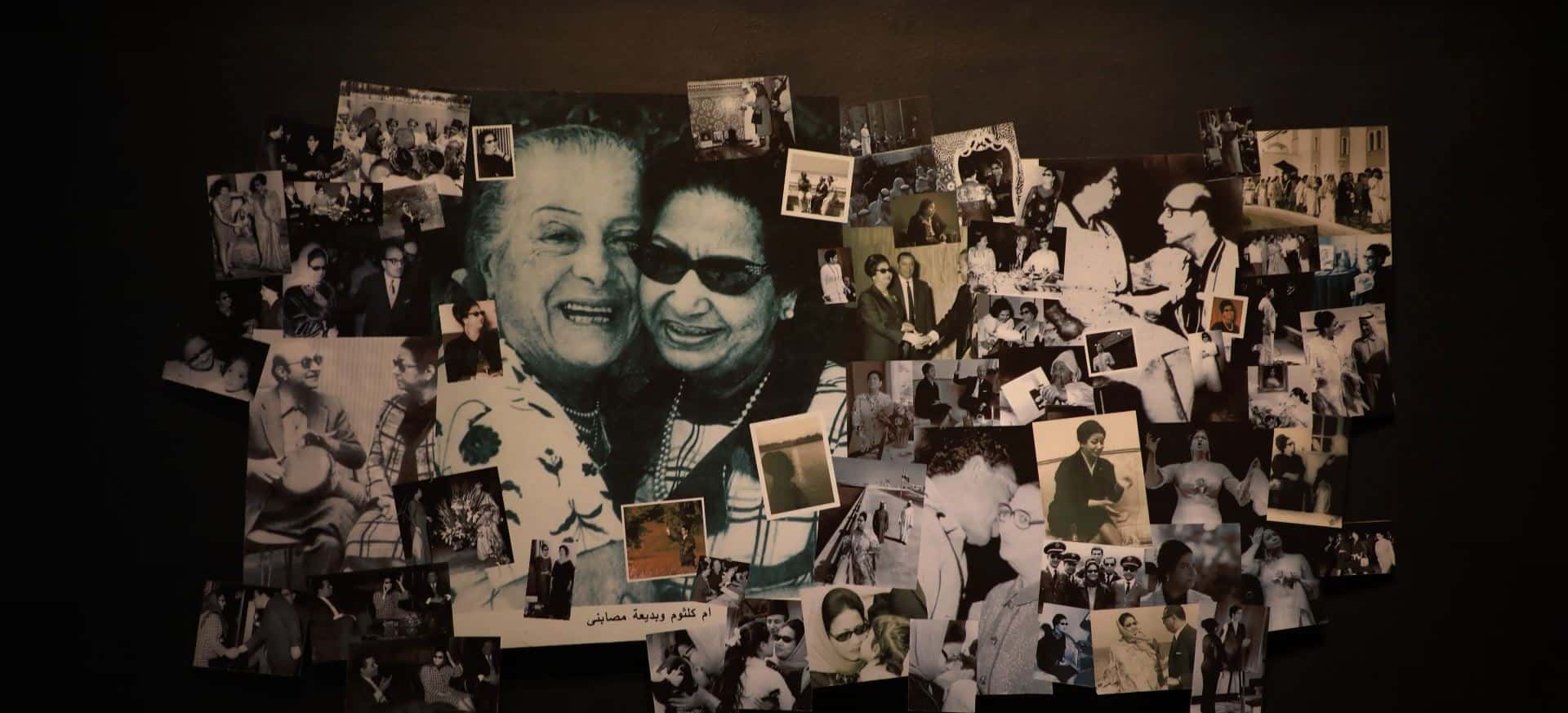Umm Kulthum Museum – Cairo – Egypt

Updated On: April 15, 2024 by Ahmed Samir
A country’s history and culture cannot be fully understood without thoroughly examining its musical heritage. Arabs referred to Umm Kulthum as “the Planet of East,” She was an Egyptian legend unlike any other. The Umm Kulthum Museum has further information about her life.
In the bustling streets of Cairo, a city steeped in history and culture lies a museum that pays tribute to one of Egypt’s most iconic and beloved figures—Umm Kulthum. The Umm Kulthum Museum is a remarkable testament to the enduring legacy of a woman whose voice transcended borders and whose music touched the hearts of millions. Join us on an enchanting journey as we explore the life, music, and profound influence of Umm Kulthum, the “Star of the East,” through this museum’s captivating exhibits and rich history.
The Beginnings of Umm Kulthum
Born on 4 May 1904 in the village of Tamay Ez-Zahayra in the Nile Delta, Umm Kulthum’s humble beginnings would eventually pave the way for an extraordinary career. She was born into a family of musicians, with her father, Ibrahim Elbeltagi, a village imam and a part-time musician. Umm Kulthum’s talent for singing became evident at an early age, and she started performing at local gatherings.
In Cairo, the bustling cultural capital of Egypt, Umm Kulthum’s talent blossomed under the guidance of her father. She began to receive formal training in classical Arabic music, a genre deeply rooted in the country’s cultural heritage. Her powerful and expressive voice quickly captured the hearts of those who heard her sing, and her fame began to spread far beyond the streets of Cairo.
The Rise to Stardom
Umm Kulthum’s journey to stardom was marked by resilience, dedication, and an unwavering commitment to her craft. Her breakthrough came in the 1920s when she started performing on the radio. During this time, she also began to collaborate with some of Egypt’s most prominent composers and lyricists, including Zakariyya Ahmad and Ahmad Rami.
One of Umm Kulthum’s defining characteristics as an artist was her ability to interpret complex Arabic poetry through her songs. Her performances were not just musical; they were profound emotional experiences that resonated with audiences across the Arab world. Her renditions of classical Arabic poems became iconic, and she was known for her exceptional ability to convey the deep emotions and nuances of the lyrics.
The Umm Kulthum Phenomenon
Umm Kulthum’s unparalleled success and popularity were not confined to Egypt but extended to the Arab world and beyond. Her concerts were massive events that attracted tens of thousands of fans. One of her most famous concerts occurred at the Olympia in Paris in 1967, where she performed for a diverse international audience.
What set Umm Kulthum apart was her ability to transcend linguistic and cultural boundaries. Her music spoke to the soul, even for those who did not understand Arabic. She sang of love, loss, longing, and hope – universal themes that resonated with people from all walks of life. Her music became a unifying force in a region marked by diverse cultures and languages.
The Legacy of Umm Kulthum
Umm Kulthum’s legacy extends far beyond her remarkable vocal talent. She was a cultural icon, a symbol of Egyptian identity, and a trailblazer for women in the Arab world. Her influence went beyond music; she used her platform to advocate for social and political change.
During her lifetime, Umm Kulthum enjoyed a close relationship with Egypt’s political leaders, including President Gamal Abdel Nasser. Her concerts and songs conveyed unity, patriotism, and resistance against colonialism and oppression. Her song “Enta Omri” (You Are My Life) became an anthem of love and devotion not just between individuals but also between people and their homeland.
The Umm Kulthum Museum – A Tribute to Greatness
The Umm Kulthum Museum, located in Cairo, is a testament to the enduring legacy of this legendary artist. The museum was established in 2001 to preserve and celebrate Umm Kulthum’s life, work, and impact on music and culture.
The museum is a magnificent structure that pays homage to the singer’s remarkable career and significant contributions to Egyptian and Arab culture. It is located in the historic district of Zamalek, a charming neighbourhood known for its artistic and cultural heritage.
Museum Highlights
- The Early Years: The museum shows Umm Kulthum’s humble beginnings, displaying personal artefacts from her childhood and early career. Visitors can see her family’s musical instruments, her first recordings, and photographs from her youth.
- The Music Room: One of the museum’s most captivating sections is the music room, where visitors can listen to Umm Kulthum’s timeless songs and watch footage of her iconic performances. The room’s acoustic design ensures her music is experienced in all its glory.
- Costume and Fashion: Umm Kulthum was known not only for her voice but also for her elegant fashion sense. The museum houses a collection of her exquisite costumes and dresses, each with a unique story and significance.
- Personal Belongings: Visitors can explore Umm Kulthum’s personal belongings, including her jewellery, accessories, and handwritten lyrics. These items provide a personal connection to the artist and offer insight into her life outside the spotlight.
- Artistic Tributes: The museum features a gallery of artistic tributes to Umm Kulthum, including paintings, sculptures, and contemporary artworks inspired by her life and music.
- Interactive Exhibits: To engage visitors of all ages, the museum offers interactive exhibits where guests can learn about the history of Arabic music, try their hand at composing lyrics, and even attempt to sing along to Umm Kulthum’s songs.
Upholding Umm Kulthum’s Legacy
The Umm Kulthum Museum serves as a place of remembrance and plays a vital role in preserving Egypt’s cultural heritage. It hosts educational programs, workshops, and cultural events that aim to introduce new generations to the art and legacy of Umm Kulthum.
Moreover, the museum has been at the forefront of digitizing and archiving Umm Kulthum’s vast musical repertoire. This effort ensures that her music remains accessible to future generations and continues to inspire artists and music lovers worldwide.
Exploring the Enriching Surroundings of the Umm Kulthum Museum
After exploring the Umm Kulthum Museum , you’ll find several attractions and points of interest to complement your visit to the museum. Here are some of the notable attractions located near the museum:
- The Cairo Opera House: Just a short walk away from the Umm Kulthum Museum, the Cairo Opera House is a cultural hub that hosts various artistic performances, including classical music, ballet, opera, and contemporary dance. Check their schedule for upcoming shows and cultural events.
- The Cairo Tower: Offering breathtaking panoramic views of the city, the Cairo Tower is an iconic landmark located on Gezira Island. It’s an ideal spot to visit for stunning vistas of Cairo’s skyline, especially at sunset or during the evening when the city lights up.
- The Egyptian Museum: While the Grand Egyptian Museum (GEM) in Giza is set to become the main museum for ancient Egyptian artifacts, the Egyptian Museum in Tahrir Square still houses a vast collection of priceless antiquities, including the treasures of Tutankhamun.
- Zamalek Art Gallery: Art enthusiasts can explore contemporary Egyptian and international art at the Zamalek Art Gallery, which often features rotating exhibitions of paintings, sculptures, and other visual art forms.
- Abdeen Palace: Located in the heart of Cairo, Abdeen Palace is a historic royal residence that now serves as a museum. Visitors can explore the opulent interiors, which offer insights into Egypt’s rich history and royal heritage.
- The Gezira Sporting Club: If you’re interested in sports and recreation, the Gezira Sporting Club offers a range of facilities, including tennis courts, swimming pools, and gardens. It’s a peaceful place to unwind and enjoy some leisure time.
- Shopping in Zamalek: Zamalek boasts numerous boutiques, art galleries, and shops where you can discover unique Egyptian crafts, jewelry, textiles, and souvenirs. Stroll through the charming streets and explore local craftsmanship.
- Dining and Cafes: The neighborhood is known for its diverse dining options. You can savor Egyptian and international cuisine at various restaurants and cafes, offering a delightful culinary experience.
- Nile Corniche: A leisurely walk along the Nile Corniche promenade allows you to enjoy scenic views of the Nile River and the city. You can also find cafes and parks along the riverbank to relax and take in the atmosphere.
- Koubbeh Palace: Located in the vicinity of Zamalek, Koubbeh Palace is a historic royal residence and museum. It showcases Egyptian culture, art, and history, making it an interesting stop for those interested in the country’s heritage.
Exploring these attractions near the Umm Kulthum Museum in Zamalek will provide you with a well-rounded cultural and historical experience of Cairo, offering a deeper understanding of Egypt’s past and present while celebrating the enduring legacy of Umm Kulthum.
Last Words
The Umm Kulthum Museum in Cairo is a testament to the enduring legacy of a remarkable artist and cultural icon. Umm Kulthum’s life and music continue to resonate with people across the globe, transcending time and borders. This museum provides a space where her story can be celebrated, her music can be enjoyed, and her impact on the world can be fully appreciated.
As we reflect on the life and career of Umm Kulthum, we are reminded of the profound and lasting influence that music and culture can have on society. Her ability to unite people through her music, convey powerful messages, and inspire change is an enduring example of the power of art to shape the world. The Umm Kulthum Museum ensures that her legacy will live on for generations, reminding us of the beauty and significance of her contributions to music and beyond.






